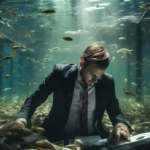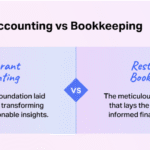An NCECA 2017 Exhibition at Antler Gallery
Neo Cali Clay Collective
Opening Reception: Thursday, March 23rd 5pm-9pm
Antler Gallery. 2728 NE Alberta St. Portland, OR.
This month will see the NCECA (National Council on Education for the Ceramic Arts) 2017 conference visit Portland and Antler Gallery is honored to have been selected as an official host gallery.
Bay Area ceramic collective Neo Cali Clay, which features eight of the most innovative and pioneering young artists in the world of clay sculpture, will bring a showcase of their beautiful representational fine art pieces to Portland.
We have worked with three of the NCC artists previously. Crystal Morey, Erika Sanada and Calvin Ma have all had feature exhibitions with Antler Gallery which were received wonderfully by our audience and we’re honored to welcome them back alongside their colleagues.
There is a compelling commonality tying the eight artists together. While their works are laudable individually, as a collective they also offer a fantastic example of the diversity and skill which define the burgeoning movement in representational, fine art ceramic sculpture.
Crystal Morey
As a visual artist, Crystal Morey takes inspirations from an alternative upbringing where she closely connected with the natural landscape around her. Living in rural Northern California shaped her perspective on nature and how humans interact with land, animals and each other. Now living in an urban environment, Morey aims to show our relationship to the world around us through the fragile medium of porcelain. With this delicate material she creates a heightened sense of urgency and stress, commenting on our human evolutionary path.
Morey received her BFA in Ceramic Sculpture from the California College of the Arts and her MFA in Spatial Art from San Jose State University. Her work has been included in many publications and online periodicals such as 500 Figures in Clay, Juxtapoz, Hi-Fructose, Beautiful Surface, Beautiful Decay and Sculpture Review. Morey has been an artists in residence at Watershed Center for the Ceramic Art, Penland School of Craft and the LH Project. Morey lives in Oakland, California where she is a full time studio artist, exhibiting her work in galleries and museums regionally, nationally, and internationally.
Erika Sanada
Erika Sanada is originally from Tokyo. She attended Nihm University College of Art in Tokyo where she received a BA in Communications and Design. Erika also attended art school in San Francisco and from there she has developed a unique and unmistakable style.
Erika deals in subjects surrounding social anxiety both past and present creating sculptures of beautifully creepy creatures in situations that are often sweet and sometimes sinister. As a perpetually worried soul her works are a way for the artist to confront the darker side of her nature as well as an outlet for the sensitivities etched on her personality through the bitter experiences of youth.
Calvin Ma
Calvin ( Calvin Ma Sculpture) approaches his work using action figures as a universal, childhood story-telling tool. Personas, narratives and emotions can be so easily grafted on to this form and in their capacity for exploration and adventure the artist found comfort through his uncomfortable early years.
“I utilize the action figure form in my sculptural work to explore personal issues and struggles with social anxiety. As an adult, I face difficulties in the social environment. Meeting new people, being in the company of strangers, crowds, peers and intermittently among friends and family brings about a heightened nervousness that takes over and impedes my ability to function socially. Even as a child I was reserved and apprehensive, so I turned to toys to keep me entertained. I believe the tactile activity of playing with them coupled with my active imagination helped establish this passion for the action figure early on. There was something about picking up your favorite hero or villain and creating stories and adventures that captivated me. It felt only natural to tap into this childlike sense of exploration and storytelling through my artwork.”
Malia Landis
Malia Landis is a sculptor and ceramic Artist living in Crockett, California. Born in St. Helena, California and raised in Waimea, Hawaii, Malia received her Bachelor’s of Arts from Humboldt State University in 2010 and her Master’s of Fine Arts from San Jose State University in 2014.
“In my sculptures, I aim to capture a moment or the trace of a memory by incorporating specific objects and geographic references. I am interested in how we assign meaning to objects and places through these memories and experiences. Using metaphor and timeless narratives, I seek to create environments of eccentric juxtapositions that invite contemplation and recollection. I utilize visual elements such as plants to represent growth, braided hair to symbolize the passage of time, fish, and birds to illustrate flight, migration, and nesting. My studio process is composed of both the curiosity for the medium’s complex chemistry and the clays inherent ability to take any form.”
Mark Jaeger
Mark Jaeger is a bay area fine artist working primarily in clay. Mark was born and raised in the bay and fell in love with ceramics at a very young age. Mark studied art and ceramics at UC Davis under the direction of Annabeth Rosen and Wayne Thiebaud. Since 2002 Mark has been teaching ceramics full time while also maintaining a constant studio practice. Mark currently lives in Marin County with his wife and two kids. His work is collected and exhibited both regionally and internationally.
“My work explores the human condition through concepts of personal and social identity. I’m interested in how we project ourselves, our culture, our history, our purpose, our morality… and how that projection is both perceived and interpreted by society and by our own selves. What is indeed our true self, our true intention, our identity… and what is an image, a fabrication, or façade manufactured for social purpose? If we can pause and consider our identity we may in fact peal through the layers of what divides or unites us: what we inherit, what we choose, and what has been forced upon us.”
Evan Hobart
Evan received his Bachelor of Arts from Humboldt State University in 2004 under the tutelage of Keith Schneider, Jim Crawford and Louis Marak. He completed his Graduate Degree from San Jose State University in 2011 working with Stan Welsh and Monica Van den Dool. Hobart has taught ceramics at San Jose State University and Medicine Hat Community College and is is currently the ceramics professor at Mendocino College in Fort Bragg, CA. Evan is also the Ceramics Program Manager at the Mendocino Art Center.
“Evan’s sculptures speak of entropy and the dissolution of the natural world in the wake of unbridled technological progress. His pieces authenticate E. E. Cummings’ observation that, “Progress is a comfortable disease.” Exquisitely detailed skulls form a stage on which traffic and aggressive urban development eclipse and erode the natural basis on which all life depends. These often-horrific visions are the result of unmistakable courage, and commitment to a personal vision most beholders would find disquieting if not unnerving.” – Jack Troy
Wesley T. Wright
In observing the creations of man and nature I am absorbed by the grotesque and eccentric, as well as the beautiful. I delight in the alchemy of putting creatures and objects together creating systems with their own logical order. I imply a mythology that is informed by our past but is in keeping with our modern circumstances. As I live my life, I collect ideas, imagery, and objects that fascinate me. From this reservoir I draw the inspiration for my work. Some of my symbolism is obvious and some more obscure, but all chosen to help process and critique the world around me. My work is successful if the viewer is filled with the same sense of wonderment that I experience as I try to understand what it is to exist in this place at this time.
Wesley T. Wright is a Northern California-based mixed media artist and arts educator known for his highly detailed and eccentric imagery. Working primarily in stoneware clay, he addresses environmental and existential issues with humor, grit, and imagination. Wright’s evocative sculptures have been exhibited in galleries and museums across the country including the Glassell Fine Arts Museum in Houston, Texas, and the De Young Museum in San Francisco, California.
(Ko-väl-chick), is an award winning sculptor, painter, and draftsman that has been contributing to the arts community in the California Bay Area since he received a BFA in ceramics from California College of the Arts in 2006. Along with his own studio practice, Joe works as a ceramics instructor at Creative Growth Art Center. He manages his own kiln repair business, restoring kilns and assisting artists throughout the Northern California bay area (www.kilnspecialist.com). Joe is also a co-founder/co-director of FM, a fine art gallery and community of artist studios within the Oakland Art Murmur district; the forefront of Oakland’s astonishing growth and creative revitalization (www.FMoakland.com).“My ceramic sculptures are often the celebration of the irrational; a celebration of ideas, impulses, and desires that spring from the darker side of the subconscious. So instead of pushing away a thought and wondering, “Why did I think something so strange?” I celebrate it and turn it into a drawing or translate it into a sculpture.
In general much of my sculpture explores aspects of the human shadow; those which we deem improper, primitive and ultimately “unfit” for modern society. These are aspects of ourselves we’ve learned to repress in our youth, and continue to intentionally repress as adults. Various cultures repress different aspects of human life in order to create a more “ideal” person. Such as how many adults have learned to repress their inner child.Although we intend to repress these aspects for the better, the ironic thing is that without these aspects the individual is not whole. As a result, people later in life may feel the need to get in touch with the repressed, but perhaps don’t know how. My work attempts to highlight these aspects and put them into the physical world; to give them a face and a set of eyes, so we can confront and better understand them.









